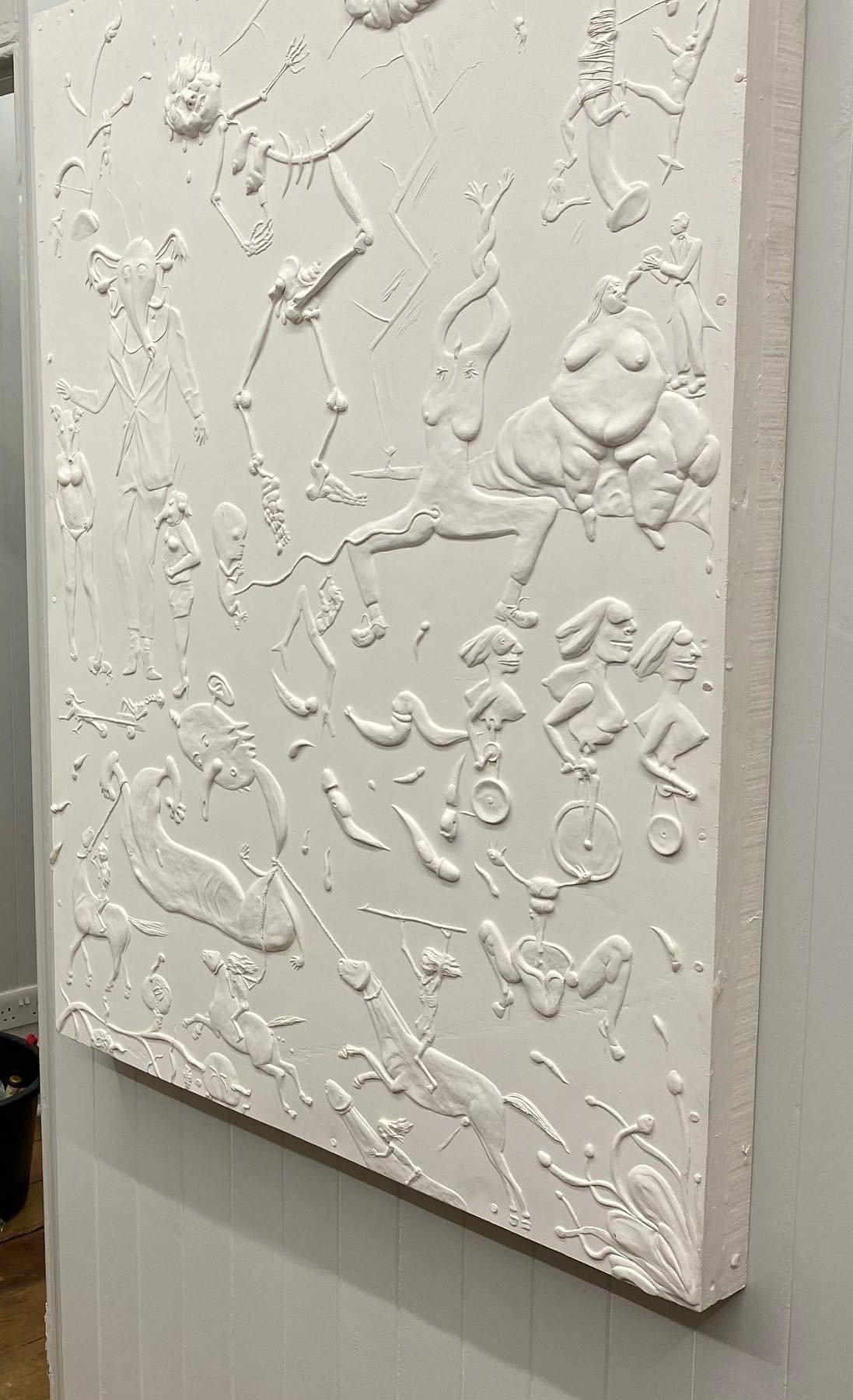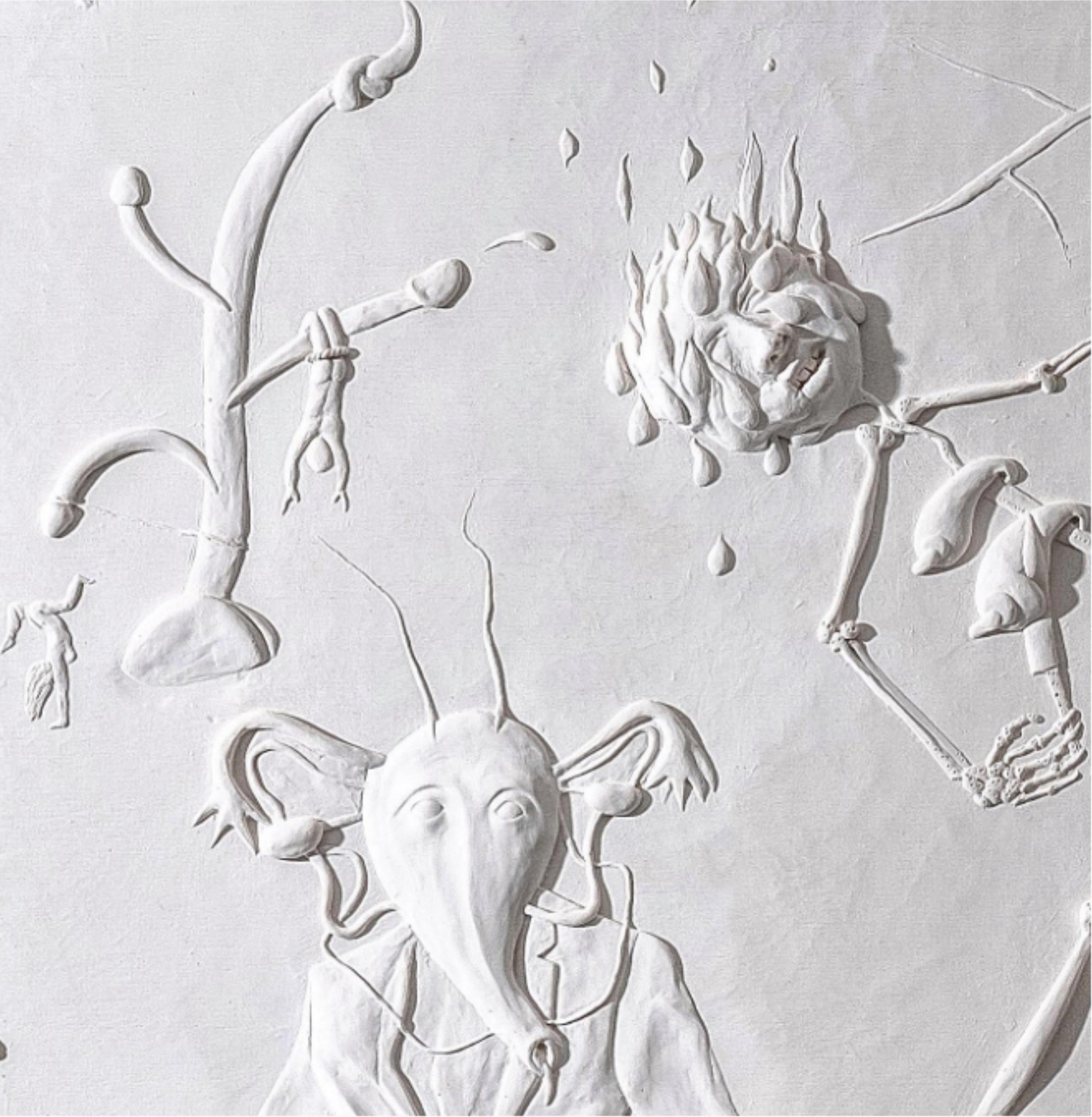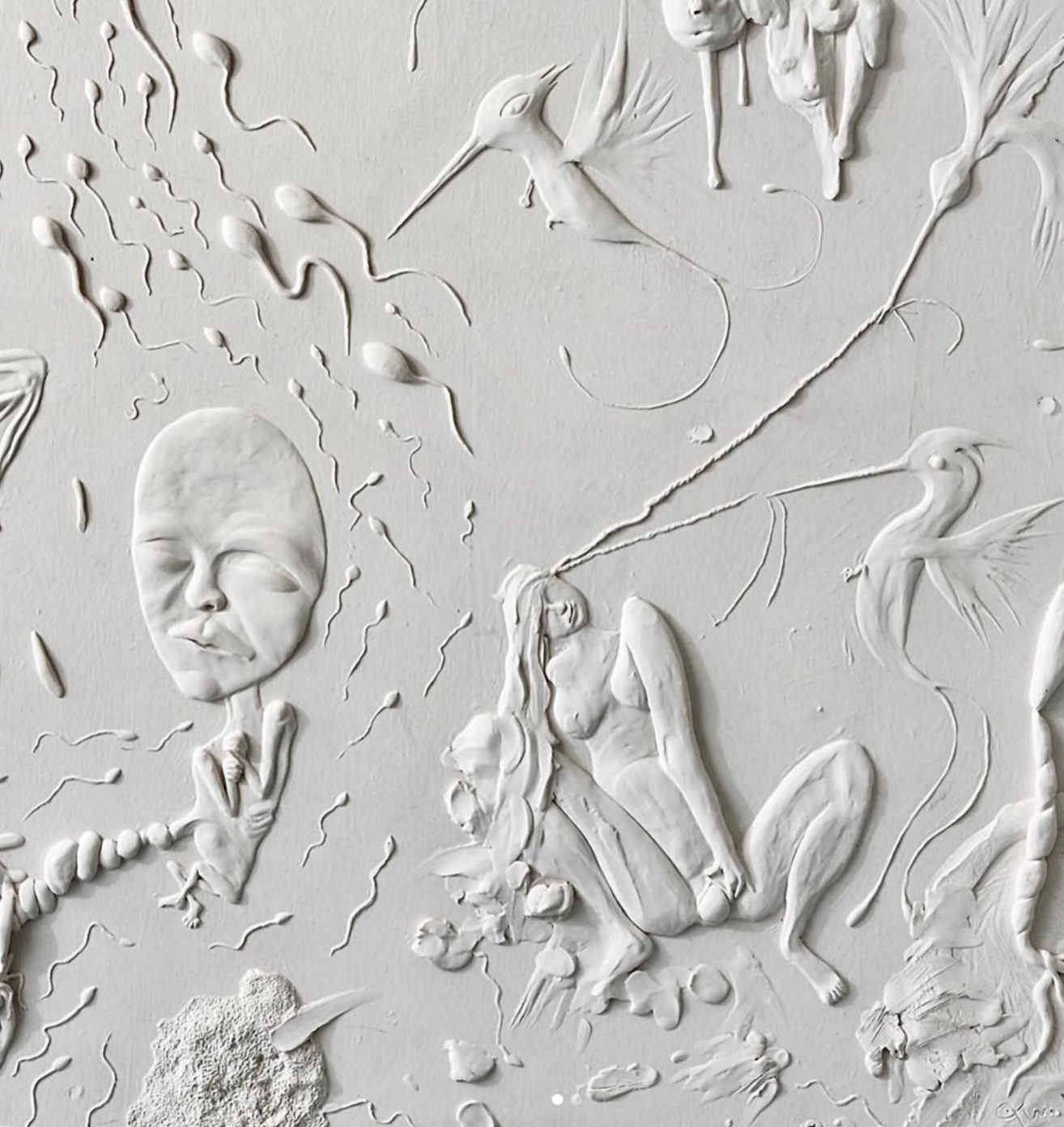Tim Noble: Imaginary Beings
Darren Flook gallery, London (11th June - 16th July 2022)
Tim Noble’s exhibition ‘Imaginary Beings’ at Darren Flook gallery is the artist’s first solo show since departing from the post-YBA power punk art duo Noble and Webster. The pair were well known for creatively combining the beautiful with a DIY aesthetic and perhaps most famously, their serene silhouettes created on gallery walls which literally used piles of rubbish cast before a projected light. Their work always retained a provocative element and often deconstructed the sacredness surrounding ‘high’ art. Noble’s solo exhibition at Darren Flook gallery is no dilution of this energy.
Five white equally sized panels populated by his ‘imaginary beings’ confront you initially. Figures morph, umbilical cords entwine, scissors start to run, genitals grow, odd creatures and foliage speckle like a rash which inhabit Noble’s strange world. There are obvious parallels here to Hieronymus Bosch, particularly in the way his creatures and ‘performances’ seem to float, the picture plane pushed forward so depth is dissolved. There is also an element of Dali and schoolboy surrealism - initially drawing attention through its reality/fantasy combination, a dream bank of images that certainly formed part of my earliest interest in art. Noble’s imaginary world has all the hallmarks of this kind of carefree doodling and sprawling visual associations which often usher in unconscious revelations. References to his position as a new father are abundant - images of sperms, wombs, foetuses etc. But if one dwells too long on his personal symbols or searches for a narrative to the five panels then this, perhaps, misses the point. These are playgrounds for his imaginary beings. The beings themselves and what they are engaged with is merely secondary to the work.
So, what makes this show worth a visit? Prior to the opening, Noble released images of the work on his Instagram. Online, the work consisted of what appeared to be five white relief blocks or panels which look like removed friezes from an ancient temple. Noble has used Jesmonite to construct the imagery and the effect looks very much like relief work on smooth stone or carved white marble. This lack of colour immediately presents the work as cool, conceptual art yet pleasingly anachronistic in its reference to Greek classical sculpture. However, this work really must be seen up close to appreciate its impact.
Finding yourself in front of one of these pieces, you notice that the Jesmonite relief is fixed to a foundation of what appears to be roughly cut wooden pallets. Nails and screws bashed and smashed, splinters and thick white paint covering everything forms the support, a far cry from the seemingly immaculate stone aesthetic online. This was one of the most striking and powerful aspects of the work and something which does not register on screens. Noble’s deliberate confusing of what initially appears to be a discovery from antiquity paired with the recognition that it wouldn’t be out of place in an industrial estate skip, flips the viewer’s perspective about what we are looking at. It is a brilliant moment of realisation as you edge, from a distance, closer to the work. Indeed, in places, Noble’s imaginary beings leave the surfaces of their flat white tablets and ‘creep’ around the edges of the work. It’s almost as if they are as surprised as us that such a rough substrate has been used to hold them in place. Noble’s ability to integrate high art with street trash ingredients played out here in a quiet voice has great reverberation. It reveals itself slowly without the need for gimmicks or titles claiming it to be work from the likes of some fictional ancient shipwreck. The idea behind these sculptural pieces is what makes the work powerfully contemporary. It’s referencing the past, present and future in a kind of universal atrium of visual delight is extremely fresh. I just hope this work won’t disappear into a private collection too soon.




